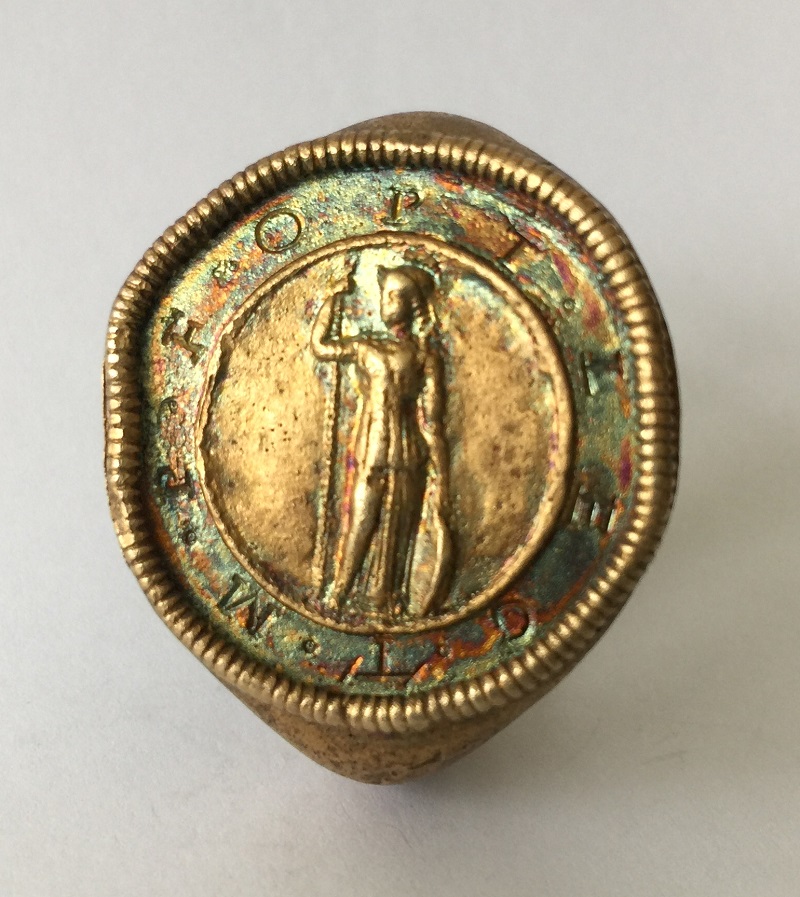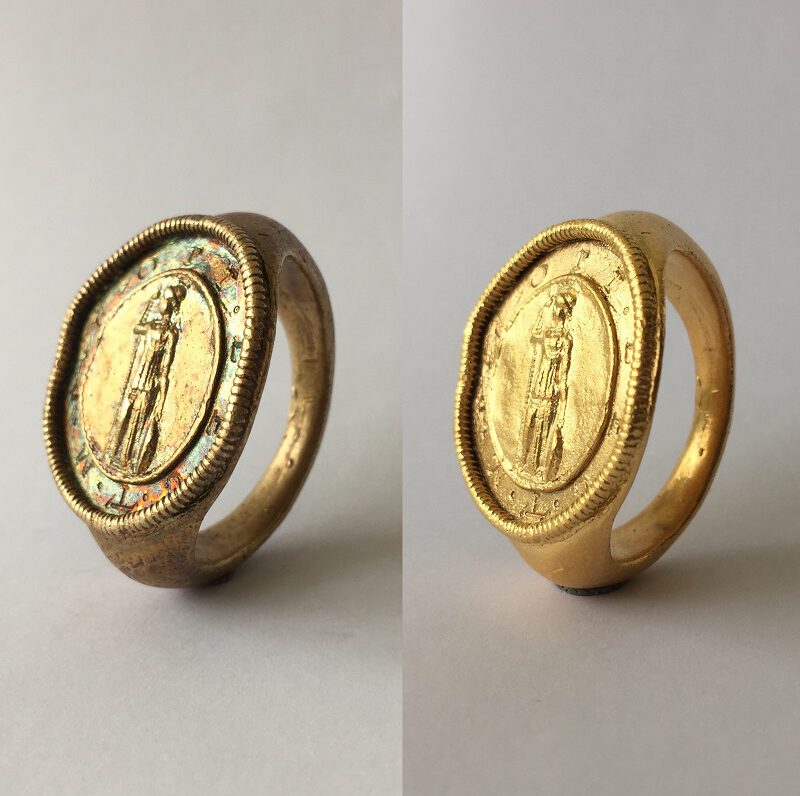In preparation for the exhibition”Rome's fluid borders” from November 2021 at the LVR Landesmuseum Bonn, the Bonn museum commissioned us with a “wellness cure” for their replica of an important Roman optio-ring, which was to be shown in the aforementioned exhibition.
An optio ring is the ring worn by a Roman soldier in the Rank a so-called "Optio", a rank of the first Roman legion - here in the legionary camp 477 on the Rhine. The Original Our golden optio ring from the 2nd century AD came from a find in Bonn and places an image of the goddess Minerva at the center of the ring mirror.
The Bonn Museum had previously commissioned a replica of this gold ring, the gold plating of which was now showing its age and urgently needed a thorough cleaning and a refreshed galvanic gold plating for the forthcoming exhibition in our studio needed. The museum replica is made of silver and over the years has practically “absorbed” the gold plating above it, probably also because no extra barrier layer was applied to the silver at the time to prevent the silver oxidation from “penetrating through”.

After the ring from the Bonn museum had reached us undamaged, it was first identified with the help of a ultrasonic bath and then thoroughly cleaned by hand, shortly afterwards degreased, copper-coated as a barrier layer and finally galvanically re-gilded with fine gold. Externally, it corresponded to the original find.

In the new large Roman exhibition of the LVR LandesMuseum Bonn, this important late Roman optio-ring was presented to the visitors in all its true-to-original splendor and freshness.
In any case, we were very happy about this renewed cooperation with the Bonn Museum.

